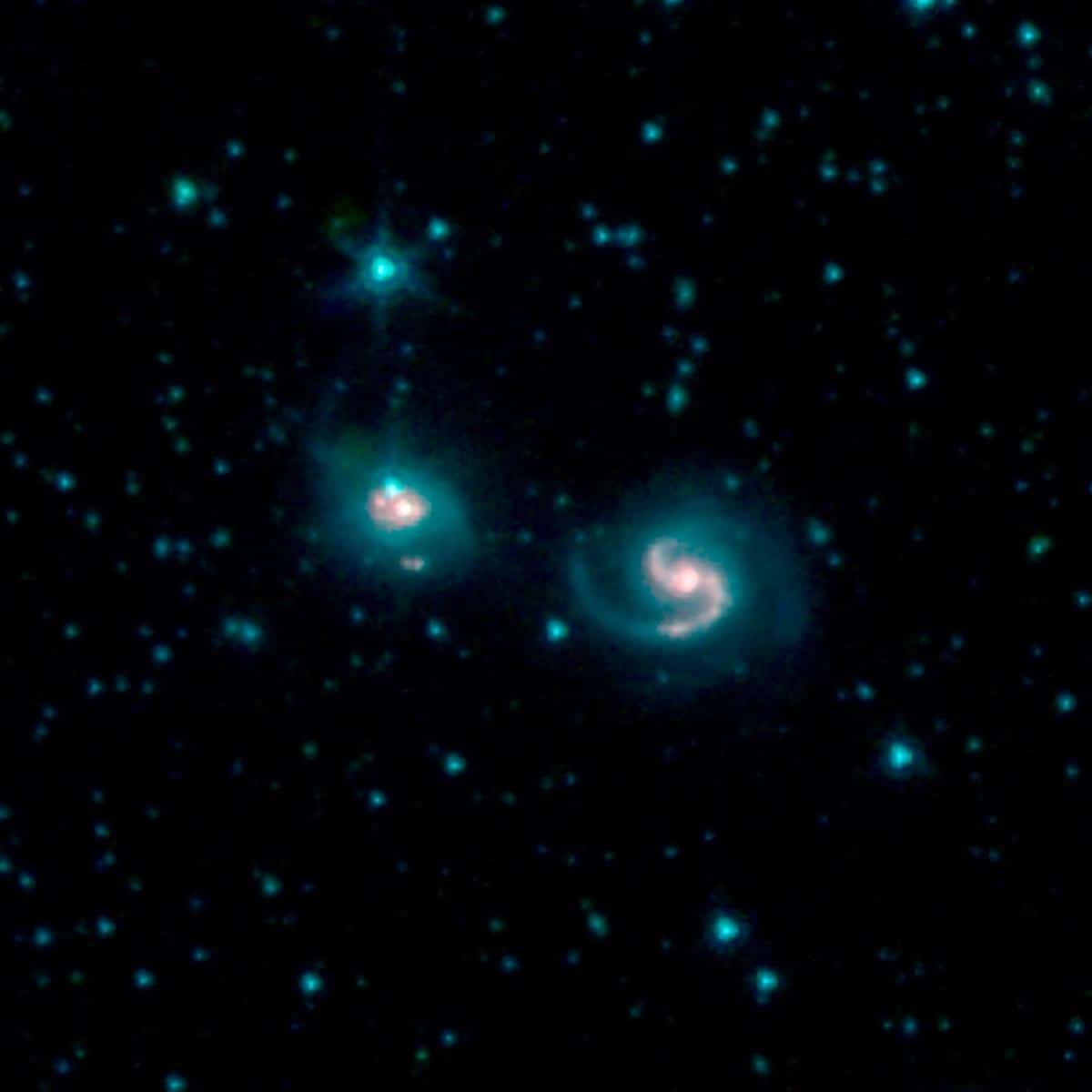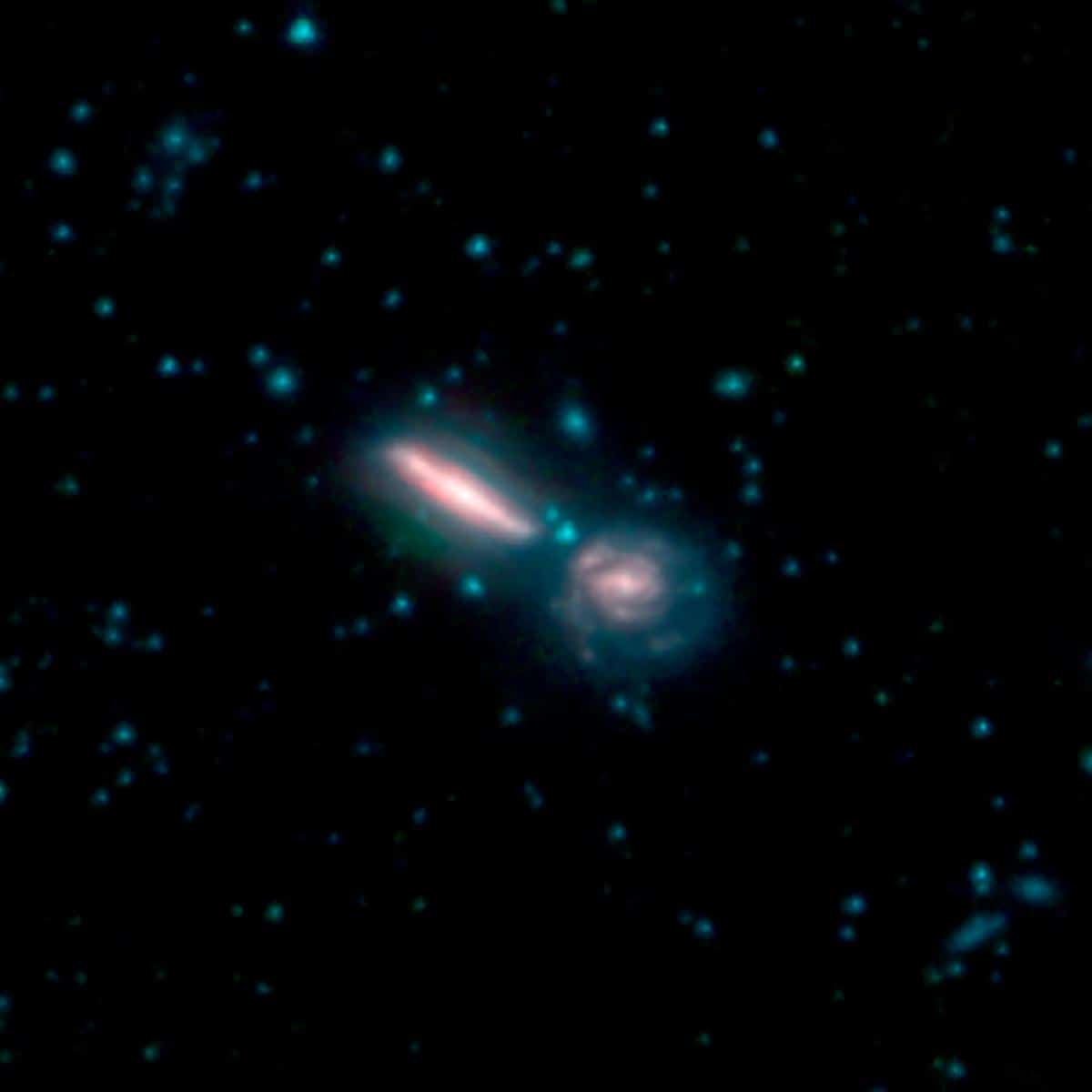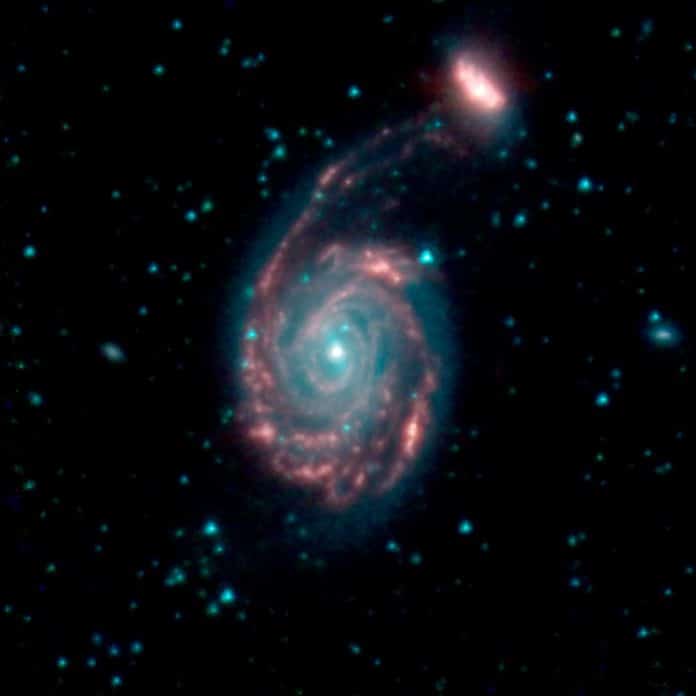NASA’s Spitzer Space Telescope recently releases some pictures that show pairs of galaxies on the cusp of cosmic consolidations. Even though the galaxies appearing separate, gravity is attracting them together and they are soon expected to merge together and form new, merged galaxies.
Since decades, scientists are working on working on the Great Observatories All-sky LIRG Survey, or GOALS, have been using nearby galaxies to study the details of galaxy mergers and to use them as local laboratories for that earlier period in the universe’s history. The survey has focused on 200 nearby objects, including many galaxies in various stages of merging. And the spitzer has captured the images.
In the images, all the colors correlate with different wavelengths of infrared light, that is invisible to the human eye. For example, Blue corresponds to 3.6 microns, and green corresponds to 4.5 microns and Red corresponds to 8.0 microns.

One of the essential procedures thought to be responsible of a sudden stop in star formation inside a blended world is an overfed black hole. At the center of most galaxies lies a supermassive black hole several times massive than the Sun. Amid a galactic merger, gas and residue are driven into the center of the galaxy, where they help make young stars and furthermore feed the central black hole.
Be that as it may, this sudden burst of action can make an unstable situation. Shockwaves or powerful winds delivered by the developing black hole can sweep through the galaxy, ejecting large amounts of gas and closing down star formation. Sufficiently powerful or repetitive outflows can prevent the galaxy’s capacity to make new stars.

The relationship between mergers, bursts of star formation, and black hole activity is complex, and scientists are still working to understand it fully. One of the newly merged galaxies is the subject of a detailed study with the W.M. Keck Observatory in Hawaii, in which GOALS scientists searched for galactic shockwaves driven by the central active galactic nucleus, an extremely bright object powered by a supermassive black hole feeding on material around it. The lack of shock signatures suggests that the role of active galactic nuclei in shaping galaxy growth during a merger may not be straightforward.
Merging galaxies in the nearby universe show up particularly brilliant to infrared observatories like Spitzer. Objectives consider having additionally depended on perceptions of the target galaxies by other space-based observatories, including NASA‘s Hubble and Chandra space telescopes, the European Space Agency’s Herschel satellite, and the Keck Observatory, the National Science Foundation’s Very Large Array and the Atacama Large Millimeter Array.
